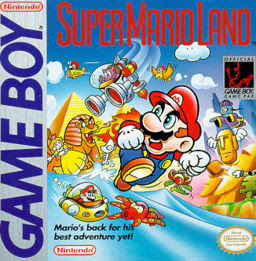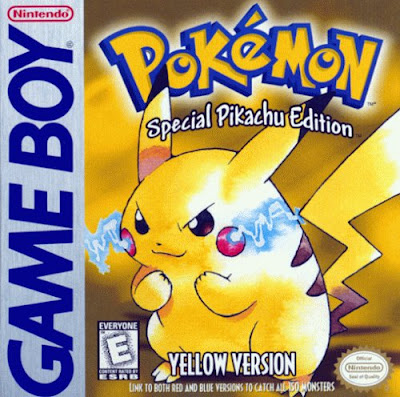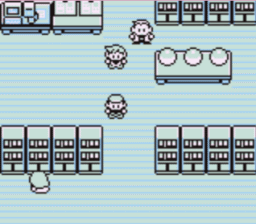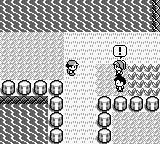The Short
Pros
- Mario in portable form in his weirdest adventure to date
- Jump across Egypt, fly through the skies, dive in the ocean, and...go to Easter Island?
- Music is absurdly catchy
- Good balance and has an unlockable hard mode upon beating it
- Graphics are minimalist but do well working with the original Game Boy's contrast scheme
- Checkpoints are liberal and levels are long
Cons
- First run is too easy. I finished with 20+ lives
- Momentum and physics are completely different from other Mario games (read: nonexistent)
- Short; only 12 levels total
- Nothing in this game ever made it into future Mario games
 |
| Let's get to Mario's Land. That isn't Mushroom Kingdom. |
The Long
Call me strange, but I have a bizarre affinity for game sequels that completely branch off from the originals. Super Mario 2, Zelda 2, Castlevania 2: Simon's Quest, and arguably spinoff games like Kirby's Epic Yarn and Pokemon Snap are some of my favorite experiences. One could argue that franchies (especially Nintendo franchises) tend to get caught in their own cycle of familiarity, which is why we end up with six "New" Super Mario Bros games every year when really there's nothing "new" about them.
But back before Mario competed in the olympics, golfed, and went into space and battled with weird gravity, Nintendo threw him out on their insanely popular handheld: the original Game Boy. Spurned forward with the release of Tetris, Nintendo knew it was time to move their most popular franchise on over. The result? Super Mario Land, which is arguably the weirdest Mario game to date, and that's counting Mario 2.
 |
| Easter Island heads? Cannons from pipes? WHAT IS GOING ON?! |
It's worth pointing out that this is the first Mario game not made by Shigeru Miyamoto. Even Doki Doki Panic, which Mario 2 was based off of, was originally created with Miyamoto at the helm. Instead Gunpei Yokoi was the head of this one, the father of the Game Boy. Yokoi's pedigree is no less great: he helped Miyamoto on almost all big Nintendo franchise, and was at the head of Metroid, Kid Icarus, Tetris Attack, and Fire Emblem. However, it's pretty clear that his vision for Mario was a bit different that Miyamoto's based on how different (and awesome) Super Mario Land is.
Super Mario Land, despite all I've said about it, still plays on it's most basic level like a Mario game. You'll be running, jumping, and stomping on enemies. You'll be hitting blocks with your head to get coins and powerups, slide down pipes for secrets, and jump over bosses at the end of stages. However, from the second you pick up Super Mario Land you know this game is going to be different, and not just graphically.
 |
| It sure looks like Mario to me... |
The physics and momentum in this game are...weird. It feels more akin to Kid Icarus than Mario. A big thing about Mario games is the momentum: get going and it takes a second to stop, fall and you hav ea few seconds before gravity really kicks in. Super Mario Land isn't like that at all. You don't really gain speed when you hit the run button, you just barrel forward. You also can stop on a dime pretty easily. Fall off something and Mario plummets like a rock, and his mid-air control (which is usually just a tad floaty in the other games) is very responsive, perhaps overly so. Now, I'm not saying these controls are bad, far from it. But I am saying they feel quite different. A bit more...jerky, might be the term.
Aside from the weird controls, the game itself is strange, and I love it for it. Set in not the Mushroom Kingdom, Mario is off across such landscapes as Easter Island, an ancient Egyptian Tomb, underwater in a sub shooting Gradius style, and soaring through the air in a plane. I think this is the only Mario game to date where he gets in vehicles (aside from Mario Kart, of course), and the mix-up is actually greatly appreciated. Side-scrolling shooters in my Mario game? Sure, why not? It's awesome and they control great, so we'll take it!
 |
| What's the story, fishbone? |
That, honestly, is my real opinion of this game: it's cooky, totally different, and I love it for it. A lot of people actually hate this game because it is so different from every other Mario game. Weirdly enough, these are also the people who, in the same breath, tend to complain about the Mario games stagnating. Um...
Anyway, even the power-ups and enemies aren't the same. Power-ups are similar: mushrooms (that look more like cupcakes) and fire-flowers, but they don't give you fireballs. Instead you get...Super Balls, which will bounce and fly up into the air before disappearing O...k? Gravity, anybody? But they collect coins too, which is pretty neat.
Enemies are also completely different. The Goomba-like guy is the only one who's familiar. The Koopas have replaced their shells with volatile C4; jump on them and a few seconds they'll detonate for a damaging explosion. There's also floaty Easter Island head, running Easter Island heads (these guys are terrifying), giant bugs, deadly fish, a cloud that's straight out of a Kirby game, and an alien. Yes, the final boss is an alien in a spaceship. Because why not?
 |
| There's a hefty amount of secrets in this game. By "hefty" I mean "actually not a whole lot." |
What is unfortunate is the length. Much like Kirby's Adventure, Super Mario Land's greatest weakness is that it's far too short. There's only four worlds with three levels each and, despite the levels being a bit longer than most Mario levels, the game can be beaten in around half and hour to forty-five minutes. After beating it you unlock a "Hard" run, which is basically the same game but with five times as many exploding Koopas, so that's a treat for those who want it.
To be honest, while I'm sad the game is short, it's about a perfect length for a portable game. As a kid this game worked great on car trips, because you could beat the whole thing once or twice for what was usually the length of a usual ride. Plus, if you get there and you have to switch the game off, it's a short enough game that replaying levels isn't painful. Maybe this is a weak argument defending what is clearly a too-short game, but I think it works for the platform it's on.
 |
| What's inside pipe number 3? ...probably another killer plant. |
Graphically, Super Mario Land is a bit...weak. While I like the weird art style, nothing particularly stands out. A rather big oversight is that Mario looks exactly the same whether he's just big or has picked up Super Ball (an issue fixed in Mario Land 2 by adding a graphical change), which is probably because of the Game Boy's color limitations.
Speaking of which, the minimalistic graphics actually work quite well to accompany the original Game Boy's awful contrast. Since backgrounds are pretty much solid white with some very light colored detail, it's very easy to see objects in the foreground. I booted it up on my brick Game Boy and it is still totally visible, much more so than almost any other games. Like the Pokemon games, the lack of detail actually worked in the system's favor.
 |
| Yeah, this game has ninjas in it. Sure. |
Super Mario Land is one of my favorite Game Boy games, even though I'll admit I like it's sequel (Six Golden Coins) a fair bit better. It's a fun game to boot up for quick runs, and the catchy music and quick gameplay make it easy to pick up, play, and then quit without feeling obligated. The sequels cut back on the oddness, which is both good and bad, but the original still holds a special place in my gaming nostalgia. Nintendo will probably never take as much of a risk with its main man ever again, and as such I'm grateful that Super Mario Land exists as a reminder that we didn't always recycle the same Mario formula over and over again.
That and picking up coins that spell "Mario" in a sub is just too fantastic to downplay. If only it were longer...and had actual momentum. Four out of five stars.
Now listen to some good Game Boy tunes.



















